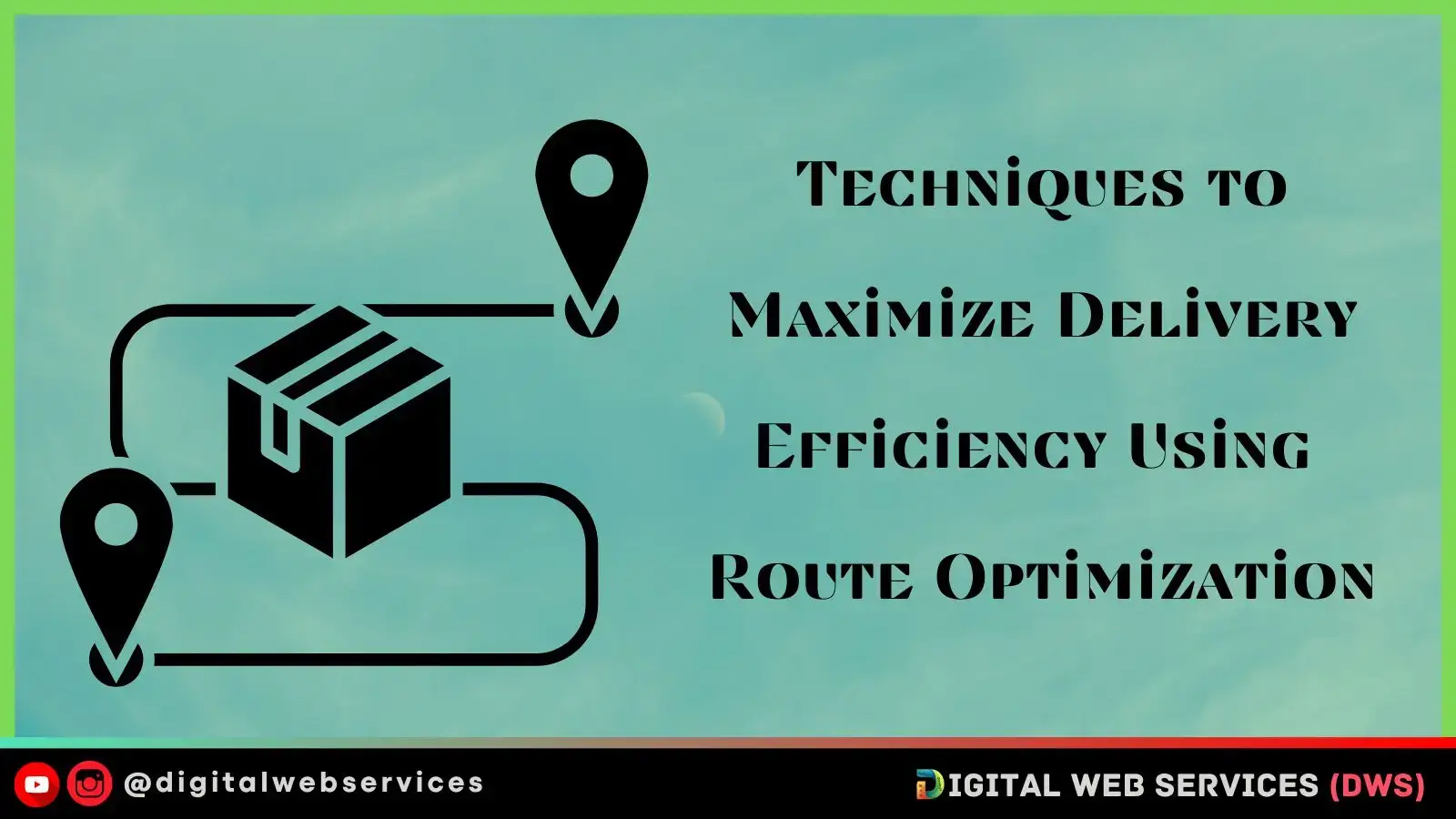
Running a delivery business is a race against time. Mastering the art of delivery optimization is necessary in a business where efficiency is the ultimate standard and every minute counts.
With the global delivery market projected to surpass 200 billion U.S. dollars by 2027, the stakes have never been higher. The burning question arises: In this rapidly expanding landscape, how can inefficiencies be eliminated and operations streamlined?
In this blog, we will explore seven significant strategies carefully created to revolutionize your delivery operations. Let’s get started, then.
Brief About Route Optimization
Route Optimization is the process of identifying optimal and cost-effective routes for the delivery drivers. It focuses on minimizing the total distance traveled or total travel time, considering the factors, such as:
- Delivery time windows
- Vehicle load capacity (weight and/or volume)
- Driver schedule
- Driver proximity and/or hub location
- Traffic congestion
- Distance between stops
It is noteworthy that route optimization is not about just identifying the fastest or most cost-effective route. Instead, it is about finding an efficient route considering all the variables mentioned above.
So, to make route planning efficient and profitable for your business, you can follow the tips mentioned in the next section.
Optimal Route Planning and Optimization Tips
Here are the seven tips that can help to maximize delivery efficiency through optimal route planning and optimization:
Tip 1: Utilizing advanced mapping software
Embracing technology is about staying ahead rather than just keeping up. Businesses can use cutting-edge tools like Upper to streamline and refine their delivery processes. Because it considers specific time windows for each delivery and suggests alternate routes to avoid congestion, this enables businesses to deliver efficiently.
The outcome is a delivery route that has been meticulously planned and is effective. It saves time, fuel, and resources ensuring that the deliveries are on time. This helps businesses to meet and exceed customer expectations while maximizing operational efficiency.
Tip 2: Real-time tracking and adjustments
With the help of real-time tracking and adjustments, businesses can streamline their operations and respond quickly to unforeseen challenges. These systems provide insight into delivery progress, vehicle location, and potential roadblocks along the route.
Furthermore, companies can make immediate adjustments, ensuring that deliveries stay on track. In the delivery landscape, real-time tracking and quick adjustments guarantee smoother operations, satisfied customers, and competitive advantage.
Tip 3: Considering traffic and weather patterns
External factors like traffic congestion and changes in the weather must be taken into consideration. By incorporating advanced software capable of analyzing external factors, organizations can proactively change delivery routes and ensure on-time deliveries.
Businesses can navigate complexities and deliver efficiently by seamlessly incorporating traffic and weather patterns into route optimization strategies. This proactive approach not only improves delivery accuracy but also boosts customer satisfaction.
Tip 4: Prioritizing stops and drop-offs
Prioritizing stops and drop-offs for time efficiency entails more than geographical proximity. By streamlining their operations, businesses can cut down on unnecessary backtracking and idle time.
It involves smart algorithms and data-driven decisions that consider multiple variables.
By strategically arranging the sequence based on factors such as time constraints, or delivery urgency, businesses can significantly enhance their overall delivery efficiency.
Tip 5: Implementing delivery time windows
Businesses can optimize their routes by accommodating customers’ preferred delivery times, this strategy not only ensures timely arrivals but also enhances customer satisfaction. Additionally, it improves resource management and allocation by streamlining operations.
Fine-tuning deliveries for customer convenience is more than a service; it’s a guarantee to meet and surpass client expectations. By integrating delivery time windows with route optimization strategies, businesses not only deliver effectively but also forge stronger relationships with their customers, fostering customer loyalty and trust.
Tip 6: Incorporating vehicle capacity optimization
This is an essential move aimed at boosting load efficiency for each trip; it’s a smart move that saves money and helps the environment. By optimizing load efficiency, organizations can reduce the number of trips, at last eliminating fuel utilization and operational expenses.
Companies can ensure that each trip is resource- and cost-effective by analyzing capacity and load factors. Advanced algorithms help to maximize the use of available space while considering weight distribution and package sizes. Overall, businesses can improve delivery efficiency, reduce their impact on the environment, and streamline their operations.
Tip 7: Continuous analysis and improvement
Last but not least, the application of techniques does not conclude the pursuit of efficiency; it’s a continuous excursion of progress. Businesses can improve their route optimization strategies and identify areas for improvement by continuously analyzing data and performance metrics.
Companies can fine-tune their operations for maximum efficiency by utilizing data-driven analytics and customer insights. This continuous improvement guarantees productivity as well as cultivates innovation and an upper hand in meeting customer expectations.
These were the seven tips that can help delivery businesses in optimal route planning and optimization. But, what about the advantages of optimized delivery routes, let us find out.
Advantages of Optimized Delivery Routes
Below are some of the advantages of optimized routes for delivery businesses:
1. Reduced transit times: In addition to reducing travel distances, optimized routes also streamline the order in which stops are made, significantly shortening transit times. This effectiveness considers faster deliveries, guaranteeing products arrive at clients promptly, which is crucial in meeting time-sensitive demands or expectations.
2. Increased productivity: Operations are streamlined by optimized routes, allowing delivery teams to handle more deliveries in the same amount of time. Businesses can handle larger volumes with greater efficiency as a result of this increase in productivity, which results in improved resource utilization and increased throughput.
3. Resource optimization: By diminishing inactive time and limiting unnecessary diversions, optimized routes guarantee that assets — be they vehicles, labor, or time — are used to their greatest potential, contributing to a leaner and more efficient operation.
4. Cost savings: By reducing vehicle wear and tear and fuel consumption, efficient routes help to save a lot of money in fleet business. As a result of this reduction in operational costs, resources that could have been used for other parts of the business can now be used to support growth and expansion.
5. Enhanced customer satisfaction: Ideal and accurate deliveries resulting from optimized routes directly influence consumer loyalty. Steady and reliable deliveries meet as well as surpass client expectations, cultivating loyalty and positive word-of-mouth references that can drive business growth.
6. Improved sustainability: Optimized routes contribute to environmental sustainability by lowering fuel consumption and emissions, in addition to being cost-effective. This eco-accommodating approach lines up with corporate social responsibility initiatives, improving the brand’s picture and credibility.
7. Data-driven insights: Comprehensive data and analytics are provided by route optimization systems. These insights provide useful performance metrics, making it easier to continuously evaluate and enhance the delivery procedure to increase efficiency over time.
Thus, we can say that route optimization offers a multitude of benefits for the businesses involved in delivery services.
Conclusion
In conclusion, route optimization emerges as the key to success in the race for efficient delivery. Each method contributes significantly to streamlining operations and increasing customer satisfaction, whether it’s using technology to adapt to changes in real-time or giving priority to customer convenience through timed deliveries.
The implementation of optimized delivery routes is only the beginning of the journey toward this goal; it’s a continuous commitment to improvement and refinement. By embracing these techniques organizations satisfy the needs of today as well as future-proof their operations for tomorrow’s challenges.
Digital Web Services (DWS) is a leading IT company specializing in Software Development, Web Application Development, Website Designing, and Digital Marketing. Here are providing all kinds of services and solutions for the digital transformation of any business and website.










